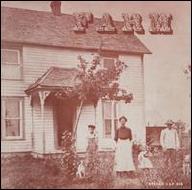Due to the uncertainty inherent with a burgeoning independent folk band and the Millers' demand for excellence, musicians came and went with regularity with the exception of bassist Mick Tyas, who persevered with the band from the late-'80s sessions through 1995, including their next and breakthrough album The Power and the Glory (1994). That album saw Gary Miller soar as a songwriter and acoustic guitar player and the band was by far the tightest unit assembled thus far as the Whisky Priests. With their unique combination of original songs, folk-rock arrangements, and exhaustive concerts, they were now their own matchless entity -- no longer being improperly equated to the Pogues or Oysterband.
After a series of reissues and EPs were released in 1994, the Priests returned with Bleeding Sketches in 1995, a cooperative effort between the Millers and Durham poet Keith Armstrong. While personnel changes continued to inflict the band, Gary Miller's songwriting continued in prolific and illustrative fashion as the band exceeded all prior efforts with the masterful Life's Tapestry in 1996. Due to the further shuffling of musicians, intense touring, and other diversions, two years passed before their next album Think Positive! was released. Not missing a beat and perhaps energized by time spent away from the studio, that album, too, was a tour de force in folk-rock circles. A series of live albums and compilations would follow, including 1998's Live on Radio Heemskerk and 1999's Here Come the Ranting Lads Live!, before the Miller brothers would close the first chapter of the Whisky Priests. However, 2000 would see Gary and Glenn Miller team up with Blyth Power songwriter/vocalist/drummerJoseph Porter in forming the acoustic trio Mad Dogs and Englishmen, who released their inaugural Going Down with Alice that same year. ~ Dave Sleger, Rovi















